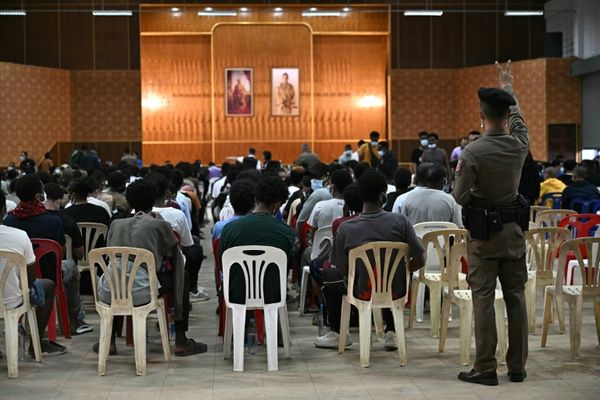The official unemployment rate fell to 3.4 per cent in July from 3.5 per cent the month before.
However, the Australian Bureau of Statistics estimates that 40,900 jobs were lost last month.
"This is the first fall in employment since October 2021, following the easing of restrictions after the Delta lockdowns in late 2021," observed ABS head of labour statistics Bjorn Jarvis.
It was a fall in the participation rate that caused the unemployment rate to decline.
The proportion of Australians either in work or actively looking for a job fell from a record high of 66.8 per cent in June to 66.4 per cent last month.
That drop in the number of people looking for work far outweighed the fall in jobs.
Given that you have to be actively looking for work to count as unemployed, this explains why the jobless rate fell even though there were fewer Australians in work.
Hours worked also fell 0.8 per cent last month as school holidays and illness had an impact.
Nonetheless, there are other signs that the jobs market remains extremely strong.
"The fall in unemployment in July reflects an increasingly tight labour market, including high job vacancies and ongoing labour shortages, resulting in the lowest unemployment rate since August 1974," Mr Jarvis explained.
"In July, there were fewer unemployed people (474,000) than there were job vacancies (480,000 in May)."
'Tipping point' for the economy?
AMP Capital senior economist Diana Mousina said the numbers seem to be another early indication that the jobs market is near its peak.
"I think we're probably at that tipping point at the moment where the survey data — the consumer sentiment figures, business confidence numbers, leading indicators — are all starting to slow down," she told ABC News Channel.
"Some of the leading indicators of employment growth have started to weaken as well, like hiring intentions, job vacancies.
"They're still running at a high level, but we were expecting to see some slowing in jobs growth, but I wasn't expecting to see a contraction."
Payroll and human resources provider Employment Hero said it has also noticed a recent small drop in employment.
The company — which has a dataset of more than 120,000 small- and medium-sized businesses employing more than 1.1 million workers — said the average number of employees per firm dropped 0.1 per cent in July.
That is after very strong jobs growth during the previous three-and-a-half years, where employment per firm was up 12.6 per cent.
"Our latest data shows that while employment growth has been strong among SMEs over the past year, the pace of growth is slowing," Employment Hero chief executive Ben Thompson said.
"This is most evident among smaller enterprises that have experienced a contraction in employee size over the past month."
Last month's fall was concentrated in businesses with less than 20 staff, where average worker numbers dipped 0.5 per cent, while still edging up for larger firms.
Employment Hero said construction and trades as well as retail, hospitality and tourism had the biggest dips in employment.
Sickness masking weakness?
Some leading economists have also pointed out that increased staff absences due to COVID-19 illness have pushed unemployment lower.
"In addition to people taking annual leave around the winter school holidays, there were also around 750,000 people working fewer hours than usual due to being sick in July 2022, around double the usual number we see during the middle of winter," Mr Jarvis observed.
JP Morgan economist Ben Jarman said elevated staff absences have led many employers to hoard labour to keep their business running.
"Increased absence from work has made employers even shorter of desired hours of labour supply, such that they have held on to existing staff to an extraordinary degree," he noted.
"Hours lost due to absences has, therefore, been an additional factor pushing the labour market to new levels of tightness through mid-year.
"It has also disguised the fact that indicators of demand for new hires have peaked out — ANZ job ads, daily vacancies, etc. — over the last couple of months."
'Aggressive' rate hikes starting to bite?
Ms Mousina said the numbers should give the Reserve Bank some pause for thought when it contemplates its next rates decision on September 6.
"This is the most aggressive rate hike cycle we have seen since 1994," she observed.
"I do think there's merit in the RBA slowing down to see the impacts of the rate rises on consumers and on the broader economy."
AMP Capital is among some forecasters expecting the RBA cash rate target to peak at 2.6 per cent this year, while financial markets and other forecasters are tipping a peak between 3-3.5 per cent.
The cash rate target is currently set at 1.85 per cent.







